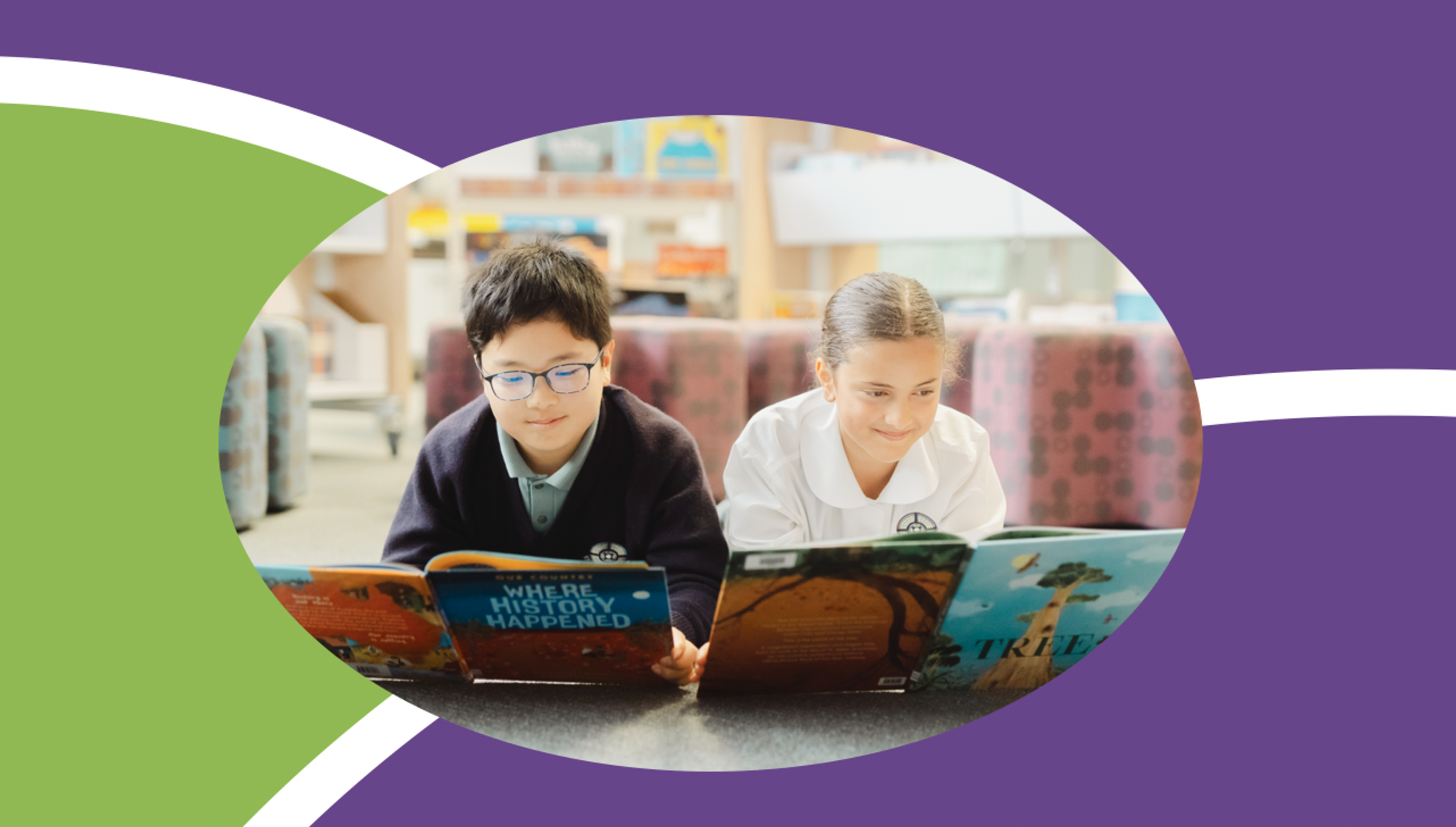Literacy & Mathematics

Children's Book Week turns 80 in 2025
Children’s Book Week is The CBCA’s key highlight national event of the year. This year’s celebration will run from Saturday 16 to Saturday 23 August.
The 2025 theme is Book an Adventure!
2025 is also a milestone year for CBCA as it celebrates 80 years of Children’s Book Week! For 8 decades, CBCA has been dedicated to inspiring young minds to journey through the countless worlds that books offer. Jess McGeachin’s imaginative artwork reflects this mission perfectly, encouraging children to set off on adventures through time, lands, and imagination. We look forward to continuing this mission for the next 80 years and beyond!
The Children’s Book Council of Australia’s (CBCA) Book Week is always an exciting event in the school calendar. It promotes reading and writing as well as an appreciation of books. It can also evoke creative responses through art experiences that relate to specific books. Book Week gives teachers and children the opportunity to focus on a theme that may not necessarily be on the curriculum agenda.
Reading stories is integral to our education; it helps us grow by expanding our knowledge, improving our ability to communicate, and enhancing our critical-thinking skills. Reading provides new perspectives, allowing us a glimpse into the lives and minds of others. It inspires us and fuels creativity. Our growth is driven by stories, and as such we are born to read.
This year our school’s Book Week Parade will be held on Monday 18th August commencing around 9:00 am on the Green (weather permitting). If the weather is too harsh, we will use the Nazareth Centre. Parents, grandparents and special friends are warmly invited to attend.
Mathematics
Counting is often one of the first ways children engage with numbers—but there’s much more to it than simply saying number words. Strong counting skills are built on several key ideas that help children understand how numbers work and develop confidence in working with them.
Here are the big ideas that support learning in Counting:
Quantity
Children learn that numbers represent an amount, or the “manyness” of a group. Understanding quantity helps children make sense of what numbers mean, not just what they sound like.
One-to-One Principle
This is the ability to match each number word to one object as they count. For example, pointing to each block while saying “one, two, three…” builds this important foundation.
Stable-Order Principle
Children learn that number words must always be said in the same order. Even when counting different things, the sequence (one, two, three, four...) remains fixed.
Cardinality Principle
A powerful shift happens when children realise the last number they say when counting tells how many there are altogether. This understanding supports accurate and meaningful counting.
Ordinal Principle
Numbers are also used to describe position—like “first,” “second,” or “third.” This is different from quantity and helps children order and compare objects or events.
Order Irrelevance Principle
Children come to understand that the order they count objects in doesn’t change how many there are. Whether you start with the red blocks or the blue ones, the total stays the same.
Subitising
This is the ability to instantly recognise small quantities without counting (like seeing 3 dots on a dice and knowing it’s three). Subitising supports number sense and mental strategies.
Number Patterns
Children explore patterns through skip counting—counting forwards and backwards in 2s, 5s, 10s, and more. These patterns lay the groundwork for multiplication, division, and understanding our number system.
By supporting these ideas, we help students move from just saying numbers to understanding them—building a solid base for all future mathematical learning.


